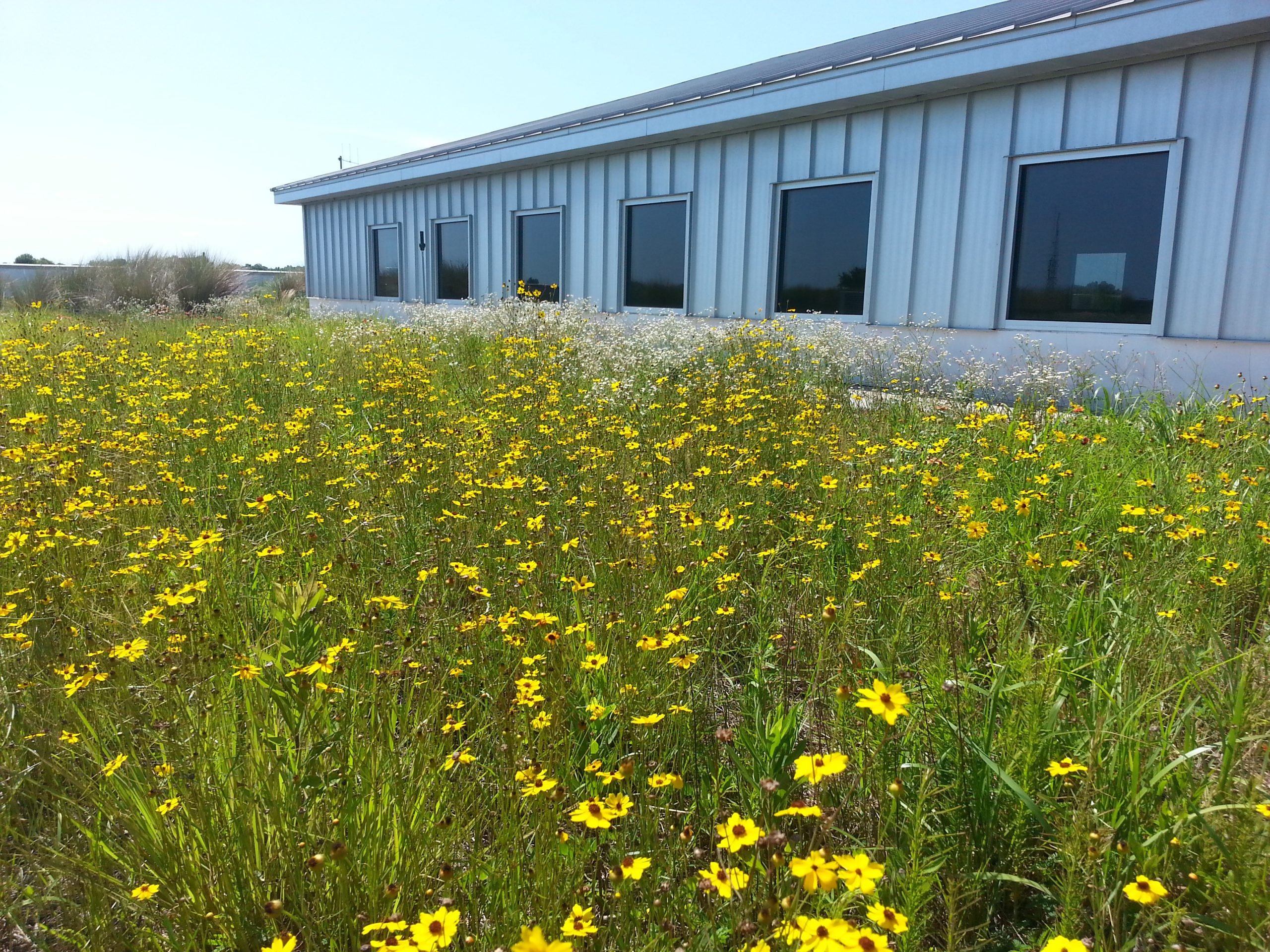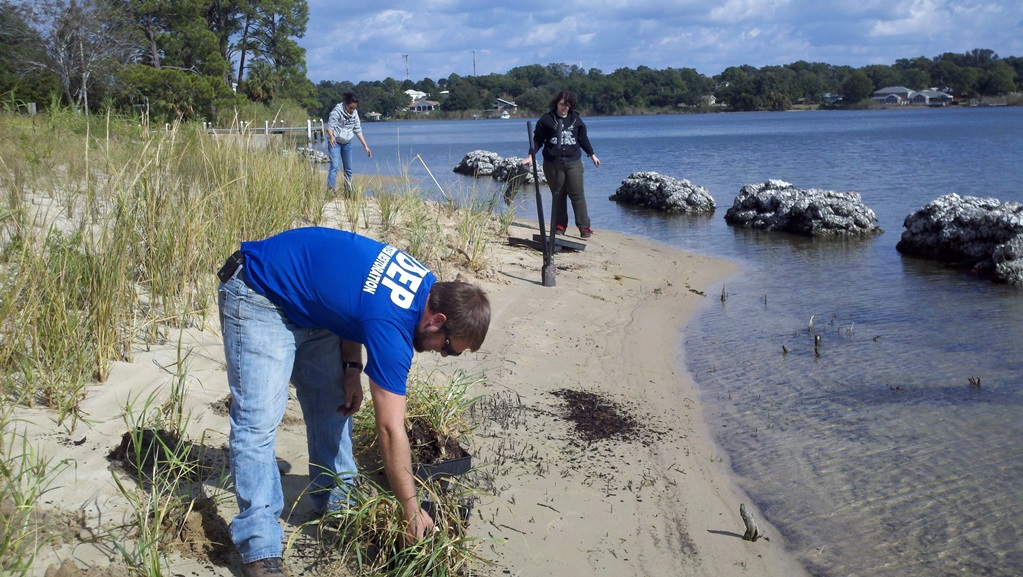Most of us in the Florida panhandle realize how important seagrasses are to the ecology of our estuaries. Not only do they provide habitat for commercially important finfish and shellfish, but they also help trap sediments, remove nitrogen from the system, and slow coastal erosion. But seagrasses throughout Florida have suffered over the last 50-60 years from environmental stressors created by humans. There has been a large effort by local municipalities to reduce these stressors, and surveys indicate that these have been successful in many locations, but there is more to do – and there are things you can do to help.
- Reduce Stormwater Run-off
Stormwater run-off may be the number one problem our seagrass beds are facing. With the increased development along the panhandle, there is a need to move stormwater off properties and roads to reduce flooding of such. Older communities may still have historic drain systems where rainwater is directed into gutters, which lead to drainpipes that discharge directly into the estuary. This rainwater is freshwater and can lower the salinity in seagrass beds near the discharge to levels the seagrasses cannot tolerate, thus killing them. This stormwater also includes sediments from the neighborhood and businesses that can bury grass near the discharge site and cloud the water over much of the system to levels where needed sunlight cannot reach the grasses. Again, killing the grass.
Most would say that this is an issue for the county or city to address. They should be redesigning their stormwater drainage to reduce this problem. And many municipalities have, but there are things the private homeowner or business can do as well.
One thing is to modify your property so that the majority of the rainwater falling on it remains there and does not run off. Much of the rainwater falling on your property falls on impervious surfaces and “stands” creating flooding issues. You can choose to use pervious surfaces instead. For larger businesses, you might consider a green roof. These are roofs that literally grow plants and the rainwater will irrigate these systems with less running into the street. There is a green roof at the Escambia County Central Office Complex building in Pensacola. To learn more about this project, or visit it, contact Carrie Stevenson at the Escambia County Extension Office.

For those buildings that cannot support a green roof, you can install gutters and a rain barrel system. This moves rainwater into a barrel (or series of barrels) which can then lead to an irrigation system for your lawn or garden. All of which reduces the amount entering the streets.

Photo: UF IFAS Escambia County.
Finally, you can use pervious materials for your sidewalks, driveways, and patios. There are a number of different products that provide strength for your use but allow much of the rainwater to percolate into the groundwater, thus recharging the groundwater (our source of drinking water) and reducing what reaches the street.
- Plant Living Shorelines
Coastal erosion is an issue for many who live along our waterfronts. The historic method of dealing with it is to build a seawall, or some other hardened structure. These structures enhance the wave energy near the shoreline by refracting waves back towards open water where they meet incoming waves increasing the net energy of the system. Something seagrasses do not like. There are many studies showing that when seawalls are built, the nearby seagrass begins to retreat. This increased energy also begins to undermine the wall, which eventually begins to lean seaward and collapse. Placement and maintenance of these hardened structures can be expensive.

Photo: FDEP
Another option is a softer structure – plants. The shorelines of many of our estuaries once held large areas of salt marsh which provide habitat for fish and wildlife, reduce erosion, and actually remove sediments (and now pollutants) from upland run-off. But when humans moved to the shorelines, these were replaced by turf lawns and, eventually, seawalls. Returning these to living shorelines can help reduce erosion and the negative impacts of seawalls on seagrasses. Actually, several living shoreline projects enhanced seagrasses in the areas near the projects. Not all shorelines along our estuaries historically supported salt marshes, and your location may not either. It is recommended that you have your shoreline assessed by a consultant, or a county extension agent, to determine whether a living shoreline will work for you. But if it works, we encourage you to consider planting one. In some cases, they can be planted in front of existing seawalls as well.
- Avoid Prop Scarring While Boating
Seagrasses are true grasses and posses the same things our lawn grasses have – roots, stems, leaves, and even small flowers – but they exist underwater. Like many forms of lawn grass, the roots and stems are below ground forming what we call “runners” extending horizontally across the landscape. If a boat propeller cuts through them form a trench it causes a real problem. The stems and roots only grow horizontally and, if there is a trench, they cannot grow across – not until the trench fills in with sediment, which could be a decade in some cases. Thus “prop scars” can be detrimental to seagrass meadows creating fragmentation and reducing the area in which the grasses exist. Aerial photos show that the prop scarring issue is a real problem in many parts of Florida, including the panhandle.

Photo: National Park Service.
The answer…
When heading towards shore and shallow water, raise your motor. If you need to reach the beach you can drift, pole, or paddle to do so. This not only protects the grass, it protects your propeller – and new ones can be quite expensive.
If Florida residents (and boating visitors) adopt some of these management practices, we can help protect the seagrasses we have and maybe, increase the area of coverage naturally. All will be good.
If you have any questions concerning local seagrasses, contact your local Extension Office.
 3
3
